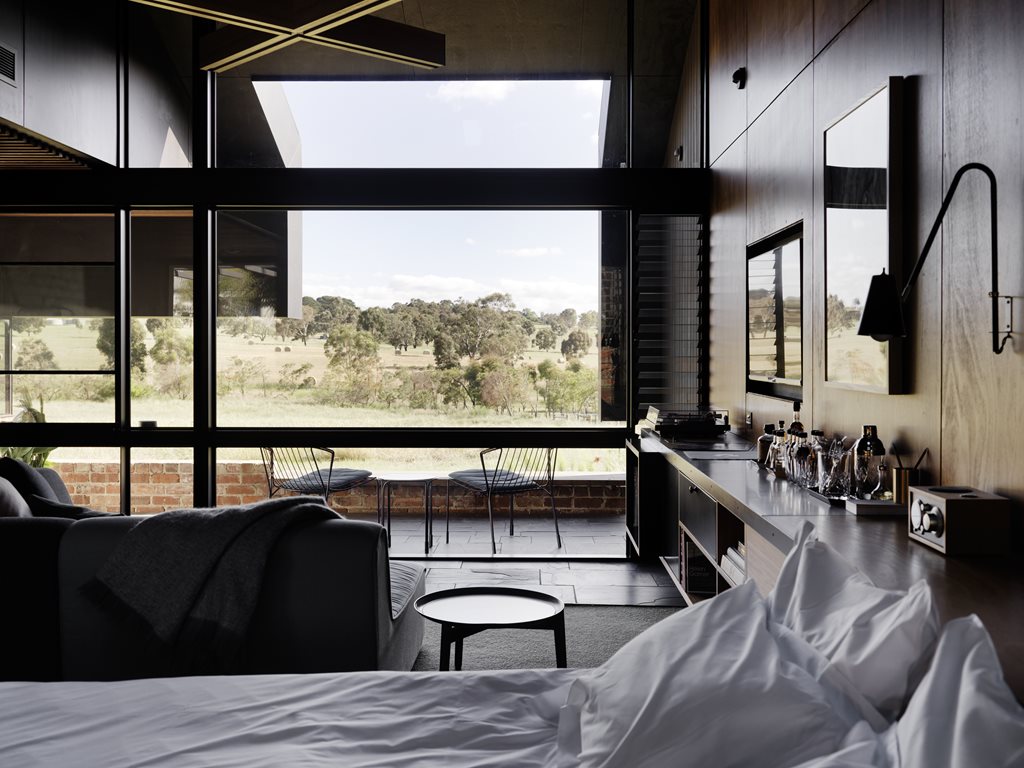A few years ago, the site of what is now Brae Restaurant and Accommodation was just a humble country homestead. From the outside, it still falls into the architectural typology of the rustic regional home – with its rich and robust palette of recycled timbers, brick, raw steel and brass – but now, instead of sleeping a family, it is capable of both feeding and accommodating a number of guests.
When Six Degrees were commissioned to make changes of this scale, they decided not to overthink it. Instead, their design included strong references to what was already there: an archetypal, utilitarian, rural shed that was folded into the landscape.
Staggered, recycled brickwork – interspersed with “occasional” heritage tile inlays – makes up the lower façade of Brae Restaurant and Accommodation. According to Six Degrees, this foundational palette was meant to be “reminiscent of ruined remnant chimneys visible in Australian paddocks”.
The remainder of the palette – raw steel and brass and an assortment of other “old materials” – was equally chosen to be characteristic of the Australian rural landscape.


“[Brae] purposefully plays off the materiality and self-build nature of old rural buildings, reinterpreting them into contemporary and luxurious interiors, framing views of the working landscape beyond,” says Six Degrees in a design statement.
“There was a desire to bring [a] careful, considered approach into the crafting of the rooms and restaurant. Simple, robust materials, [a contrast between] hard and soft, and a level of intricate detailing remind you that hands have made and shaped the buildings.”
On the inside, the design of guest rooms and communal spaces is intended to be equally as comfortable and evocative of life in rural Australia.
“[The rooms have] a comfortable familiarity, as if you are staying at a friend’s,” says the architect. “Any suggestion of a hotel room has been banished: no doilies, no beige carpet, no boxed soap. Instead, you can select from a range of fine liquors and settle down with a single malt to watch your framed view of the rolling hills beyond.”


It makes sense that, if Brae’s design draws so much from the landscape for its design, then it should also give back to the environment in a more functional, workable and sustainable sense. The building has been designed to have a net-zero energy use, achieved through the incorporation of a total 48 solar panels that, together, provide 12.5kW of power.
Of course, restaurants and hotels both have huge amounts of wastage and irrigation. To this effect, a 4,000-litre worm farm has been installed to distribute waste and water to the fields that lie to the south of the site. A rainwater tank on-site has capacity for 40,000 litres of water, which services the drinking and washing needs of occupants.
All up, through the careful implementation of passive thermal design and common-sense operational initiatives, Brae’s accommodation building succeeds in achieving a 7+ Nathers star rating.

